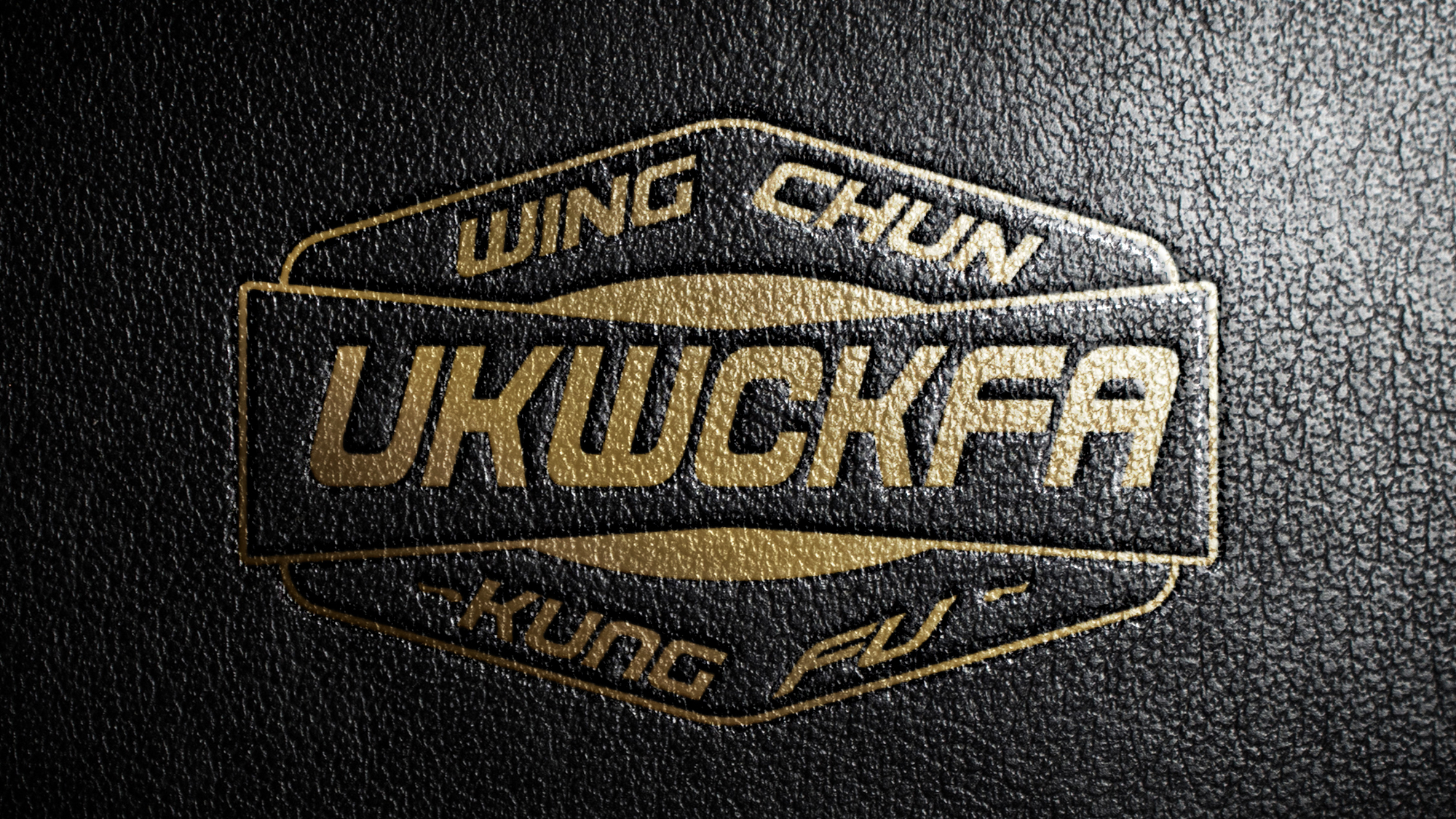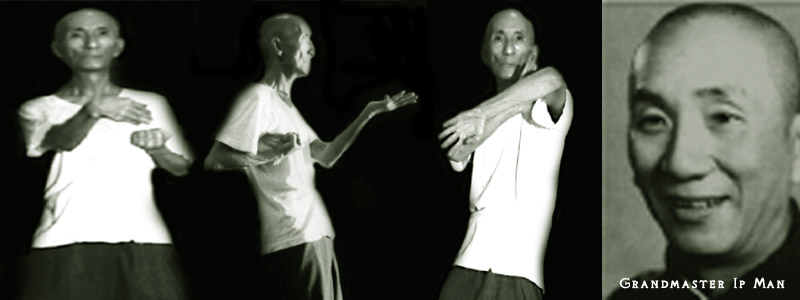What Is Wing Chun Kung Fu?
Before we discuss the question “What is Wing Chun Kung Fu?”, let us help make the question easier to understand by explaining what the term Kung Fu is first….
The term ‘Kung Fu’ is a basic translation of Chinese words that mean ‘hard work’. Kung Fu, therefore, is a generic term that is commonly, but not exclusively, used to embrace all of the Chinese Martial Arts.
There are literally hundreds, if not thousands, of styles of Kung Fu. Many have the suffix ‘Kuen’ or ‘Gar’ meaning fist and family. So in China you can simply have Mr X’s fist fighting style.
The martial art television series ‘Kung Fu’, and the Shaolin monks who tour the world demonstrating their impressive skills, are showing many different arts. The Arts can all be put together under the term Kung Fu as they clearly show the hard work and dedication that has gone into their mastery.
The term Kung Fu is exclusively used to describe the the Chinese approach to martial arts and is an an amalgam of systems, styles and ideologies from China.
Kung Fu is not the ONE style that many people believe, that does not, in fact, exist. The five animal styles -Hung Gar- will be as close to the impression of Kung Fu that most people have.
Wu Shu is another term that generalises/encompasses Chinese martial arts.
It may also help those that are new to Martial Art if we point out that the term ‘Martial Art’ is again a generic term for military self defence arts.
Therefore, it is easy to see why some approaches are not suited to Western competition or sport with rules. Martial Arts are in effect battlefield skills, and clearly for life and death situations. They are effective fighting systems and require considerable discipline in order to be able to perform when one is under immense pressure. Life and death is about as tough as it gets! Hence why army discipline is so strict and why many Martial Arts schools follow this model.
Is Kung Fu Good For Self Defence?
It is now that it should be pointed out ‘Self Defence’ and ‘Martial Arts/ Kung Fu’ are two quite different things. 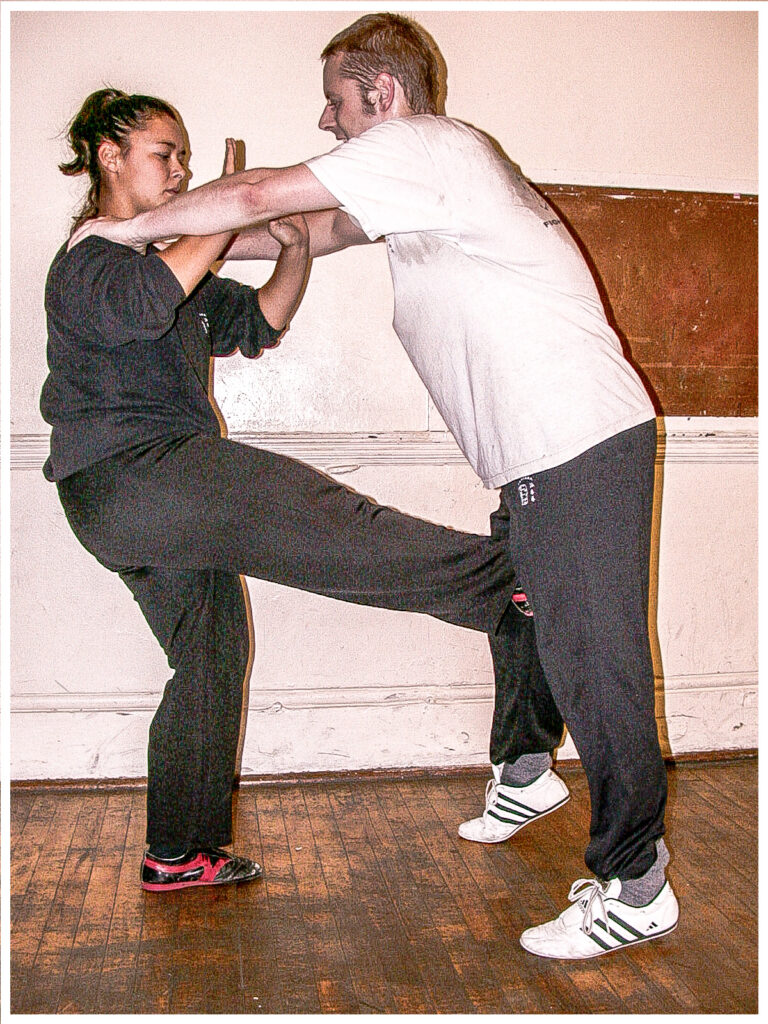
Most people we meet at the UKWCKFA have an urgent need to learn how to keep themselves safe. At the UKWCKFA we teach common sense and good body language skills to avoid becoming a target in the first place. Physical confrontation should always be avoided, if at all possible.
Violence and intimidation are dangerous and frightening. It takes ‘Time and Effort’ in the form of disciplined training to change your physical and emotional responses to aggressive confrontation. You can now appreciate that self defence against a potentially hidden threat is very difficult indeed.
Terrorism is the violence meted out on most women in attack situations. The assailant, terrorised the victim ‘approached from nowhere’ and attempts to ensure their own safety and anonimity. There remains little potential for self defence against an ‘attack from nowhere’.
When a victim fails to observe their environment and falls into the trap of an assailant, the chances of escape are reduced.
Being drunk, taking drugs, and foolishly taking a shortcut across a high risk area, all lead to increased danger and reduce the ability to deal with the potential consequences.
Self defence also means developing self discipline.
Benefits & Pitfalls
Training in Wing Chun Kuen will have some profound affects.
As you continue on your martial journey your intial reasons for starting will no longer hold fast. You will change perceptibly in your manner, confidence and physicality. Martial art training is hard work. We know you will possibly lose up 50% of your class training skills under pressure. If you have little skill in the first place then all you have is fitness and conditioning. This is why UKWCKFA beginners are pushed.
If you are a frail or overwieght individual your chances of survival in a physically violent confrontation are lessened considerably. You may even find it difficult to hold out fighting back long enough for the perpetrator to fear being seen or caught. If you honestly know you could not run from a situation, please do not be fooled into believing that a few martial art tricks and skills will save you.
There are many gimmicks claiming to train you in just four hours. Claims to be able to reprogramme your responses in a violent situation in just a few lessons. These are shameful claims from the unscrupulous. The UKWCKFA will teach you the skills to stay safe first, before dealing with a physical confrontation.
Every person will fight to survive, that does not mean they will win. You will fight as hard as you feel loved or love yourself. Many victims of bullying etc. do not hold themselves well and portray a lack of energy or confidence. This image can often result in them being chosen to be violated by a depraved mind. They are seen as a safer target to attack. They are victims and have a victims mindset or body language. We will teach you to understand how to change this.
Why Learn Wing Chun For Self Defence?
Why learn Wing Chun When Self Defence Is So Difficult?
Wing Chun Kuen is a direct, simple and effective approach.
The approach was designed from the outset by two WOMEN to deal with adversity. This gives the Art a unique advantage.
As men a generally stronger and more aggressive this is a major disadvantage to a women in a confrontation with a male assailant. Whether it be domestic violence or a predatory street assault this is a serious problem.
Domestic violence is often maintained by keeping the female in fear and dependant on the male, creating fear of leaving and, although often aware, they become ‘secure in their insecurity’ as this is the life they now know. All bullying action relies on the victim being blamed or taking the blame. Many women feel the violence is their fault. It is NOT.
The predatory street attacker has a criminal mind. They approach and pick a victim minimising the danger to themselves. They do not wish to be indentified, and certainly don’t wish to be caught or punished for their actions. If you place yourself as a target to them, you will have little or no chance. We will help you to read situation and know what to look out for.
It is clear that for Wing Chun Kuen to work there has to be a chance. You will also need to learn how to create a chance.
In the UKWCKFA we specialise in teaching self defence and Wing Chun Kung Fu side by side to help all of our students take advantage of that chance.
Wing Chun For Everyone
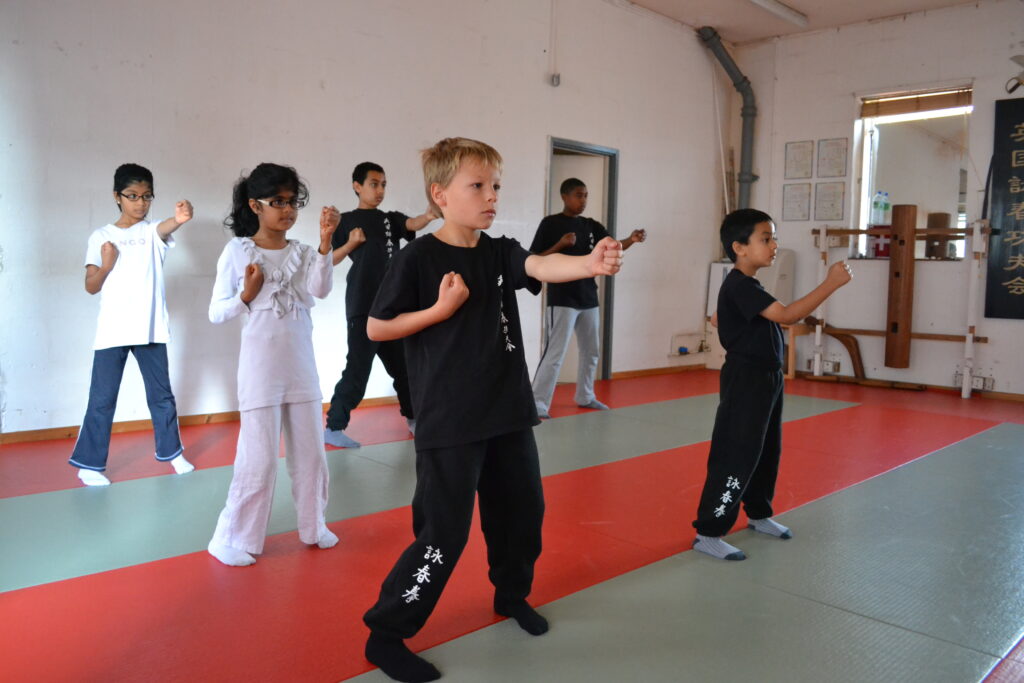 For a woman in a street situation a male aggressor would already be considered emotionally unstable. The female Wing Chun practitioner has to respond using the skills of Economy of Motion, utilise the weight, size, and motion of their opponent and turning them to her advantage.
For a woman in a street situation a male aggressor would already be considered emotionally unstable. The female Wing Chun practitioner has to respond using the skills of Economy of Motion, utilise the weight, size, and motion of their opponent and turning them to her advantage.
Whilst we may refer to the aggressor being male, there are situations where females are also aggressive. However, the same principle applies.
Wing Chun Kung Fu is suitable for all ages and abilities with children as young as 5 years of age attending classes and developing well.
People with various disabilities including the blind, paraplegic and persons with learning difficulties can all find Wing Chun adaptable and suitable. It is a clever, flexible system enabling most people to achieve a reasonable skill even in the face of adversity.
Some students may find they have physical limits, but this does not limit their enthusiasm and enjoyment. The UK Wing Chun Assoc is one of the worlds most respected authorities on the art with lots of experience in teaching the whole community. We are happy to take enquiries from charities, societies and groups working with all kinds of challenges.
What Is Wing Chun Kung Fu?
Introduction To Wing Chun Kung Fu
‘Wing Chun’ translates a ‘Perpetual Springtime’. ‘Yim Wing Chun’ was the name of the first student of Ng Miu the founder of the Art. An Art proudly founded and honoured by women.
Appending the the term ‘Kuen’ (Fist) to Wing Chun indicates that Wing Chun Kuen is a ‘fist’ fighting style named in her honour by Ng Mui for her progress in the Art.
Wing Chun Kuen, or as it is colloquially known, Wing Chun Kung Fu, is just one of many styles of martial art whose origins are to be found in Southern China and, compared to other arts, is a relatively new style.
Wing Chun Kung Fu is known as a ‘soft’ style but is, in fact, a blend of both hard and soft techniques. This blending of hard and soft is due to the fact that a sensible balance is necessary.
One story is that Wing Chun Kung Fu was originally developed by a woman. It is also said that the originator (said to be a Buddhist nun named Ng Mui) observed a battle between a Cobra snake and a Crane bird. From Ng Mui’s observations sprang ideas to develop this art.
Mimicking animal movements is particularly common to Chinese martial arts, and some systems even copy the amimal ideosyncrasies. However. Wing Chun Kuen is devised with the human structure in mind, and relies on the strategies of the encounter. Wing Chun Kuen practitioners do not not try to be a snake or crane in the same way that, for example, the monkey stylists mimic many of the animal traits, not just the strategies.
Wing Chun Kuen: 3 Tenets
Wing Chun is based on three principles, namely:
- Simultaneous Defence and Counter Attack by Interception
- Economy of Motion in every technique
- Centre Line
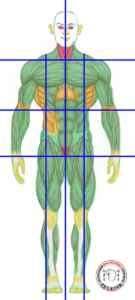
The ‘Centre Line is viewed as being the most definitive part of the Wing Chun Kung Fu system as there are many strikes, which seek to dominate the aggressor’s centre.
This ‘Centre Line’ is also protected at all costs as many of the fatal striking points lie along its path. By protecting the centre line and attacking from it, the Wing Chun practitioner has a good advantage in self defence.
Wing Chun students are not the instigators in a confrontational situation. Wing Chun Kuen was developed as an art of self-defence, where one is reacting to an initiated threat.
This does not mean we do not strike first, if the threat is very high this is sometmes necessary, but it must be emphasised this is due to the actions of another creating the ‘threat’.
This realistic approach is not a softer option as Wing Chun is a very effective counter striking style. One UKWCKFA student coined the phrase ‘Wing Chun Kuen: We Finish What You Start’.
If one is fighting multiple assailants the situation will dictate the need to attack aggressively. The need to strike and escape as soon as possible is the main objective in such a situation. The Wing Chun stylists’ use of finger strikes, elbows and knee kicks is of great value.
Even the most skilled Wing Chun practitioner can only fight one person at a time, it is the clever use of footwork skills which helps you do just that when under great threat.
Wing Chun Kuen: A Flexible Approach
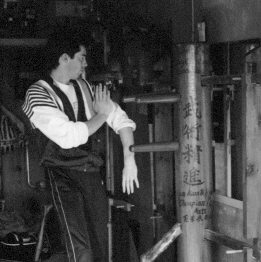
This technique is a major building block in the framework of the style. It is taught to beginners as a basic cover against an attack, and is the founding principle in Lok Sau, Single Chi Sau, Double Chi Sau and the Wooden Dummy (See photo).
The Bong Sau is particularly useful to the students understanding of the style. The shape is more important than the strength, it is designed to cover a wide area, to fold under extreme pressure, whilst never allowing the arm to get trapped.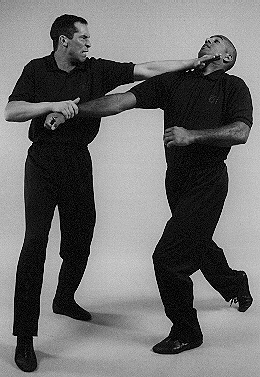
The Bong Sau can change easily into Taan Sau (palm up block) allowing one to slip the hand free, and the rear guard hand (wu sau) can grab and deflect the incoming strike. The bong then becomes an effective throat cutting hand.
This one technique demonstrates how flexible the Wing Chun system is. It also shows that if one technique can be used in many situations why learn many different moves for many situations? This reinforces simplicity as a main tenant in the system.
Wing Chun: A Cultural Reflection
Wing Chun Kung Fu is based on the Taoist principle of ‘Take the Middle Road’. This implies that one should not go to extreme. No quality is the ‘most important i.e. speed, strength, fitness. Success is based on harmonious balance this implies that if one is in the middle road you can see both left and right paths. If you go too far to the left or right you lose sight of the other side.
This is can be seen in the fact that Wing Chun is a hard and soft style, the yin and yang. The ‘Yin’ (feminine) focuses on diverting the flow of energy, the ‘Yang’ (masculine) seeks to resist any opposing energy flow. Whilst the Yin energy principle may be deemed more suited to women, both sexes need both qualities to some measure. The yang is primarily seen in the explosive quality of the striking moves.
Ng Mui, and subsequent generations, have refined the system further by keeping to simple, almost scientific principles, such as:
The Centre Line Theory
To protect and strike at the major pressure points and prevent power being ridden away.
Economy of Motion
Keeping every movement as simple as possible, striking from where the hand lies and keeping leg techniques low.
Combined Block and Attack
The Principle of Combined or Simultaneous Defence and Attack i made by Interception. Basically techniques incorporating the saying of ‘The Striking Hand IS The Defending Hand’ and vice versa.
Wing Chun Kuen: Sticky Hands
One of the most important techniques in Wing Chun Kung Fu is the practice of Sticky Hands (Chi Sau). Because Wing Chun is a close quarter system, it could be potentially dangerous to the practitioner themselves as they are usually in range of being hit, grabbed, kicked etc, by their opponent. This understanding has led to a remarkable skill training method called Sheung Chi Sau or Double Sticky Hands.
Master James Sinclair the Founder and Chief Instructor of the prestigious UK Wing Chun Kung Fu Assoc. has long been considered one of the worlds most skilled and knowledgeable Chi Sau practitioners. He has released a superb DVD on the the subject which can be purchased here.
To the uninitiated it is best described as resembling a hurt boxer trying to ‘spoil’ his opponents moves by clinging to the arms. The aim is to prevent the opponent striking freely and allows the Wing Chun Stylist an opportunity to control, trap and break free to strike. The real skill is that both parties want to achieve the same goal, and this has led to tremendous techniques beingdeveloped, to a standard where either one or both parties can train blindfolded. These techniques were devised to enhance sensitivity to the direction or pressure of an attack. An awareness of the potential techniquesfrom an opponent then develops. A skilful practitioner can eventually predict and nullify the danger and overcome the opponent.
Sensitivity
– Centreline concept
– Reaction to direction change
– Closing and leaving the gap
– Strike when the hand is freed ‘Lat Sau Jik Chung’
– Go with the power do not resist force
– Stances and the ‘changing of structure’
– The ‘Hand traps Legs’ skill
– Continuous techniques (fluidity)
– Balance of the vertical and horizontal planes[/col]
Power
– Guiding Power
– Aggressive Power
– Power control
– Balance of power (Equalisation)
– Flowing of chi
General
– Trapping techniques
– Blocking and attacking ability (Hand techniques)
– Balance of technique
– Immovable elbow line
– Combination of Hand and Leg techniques
– Timing
– Stamina
– Confidence


